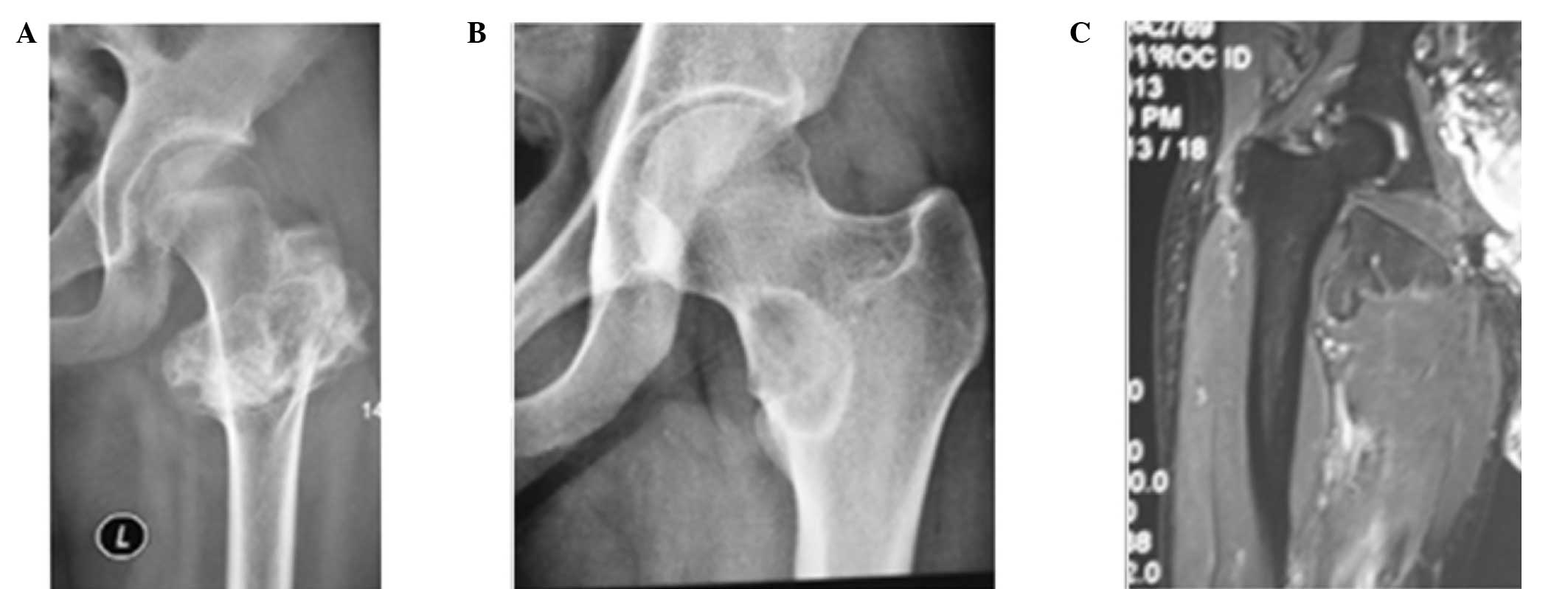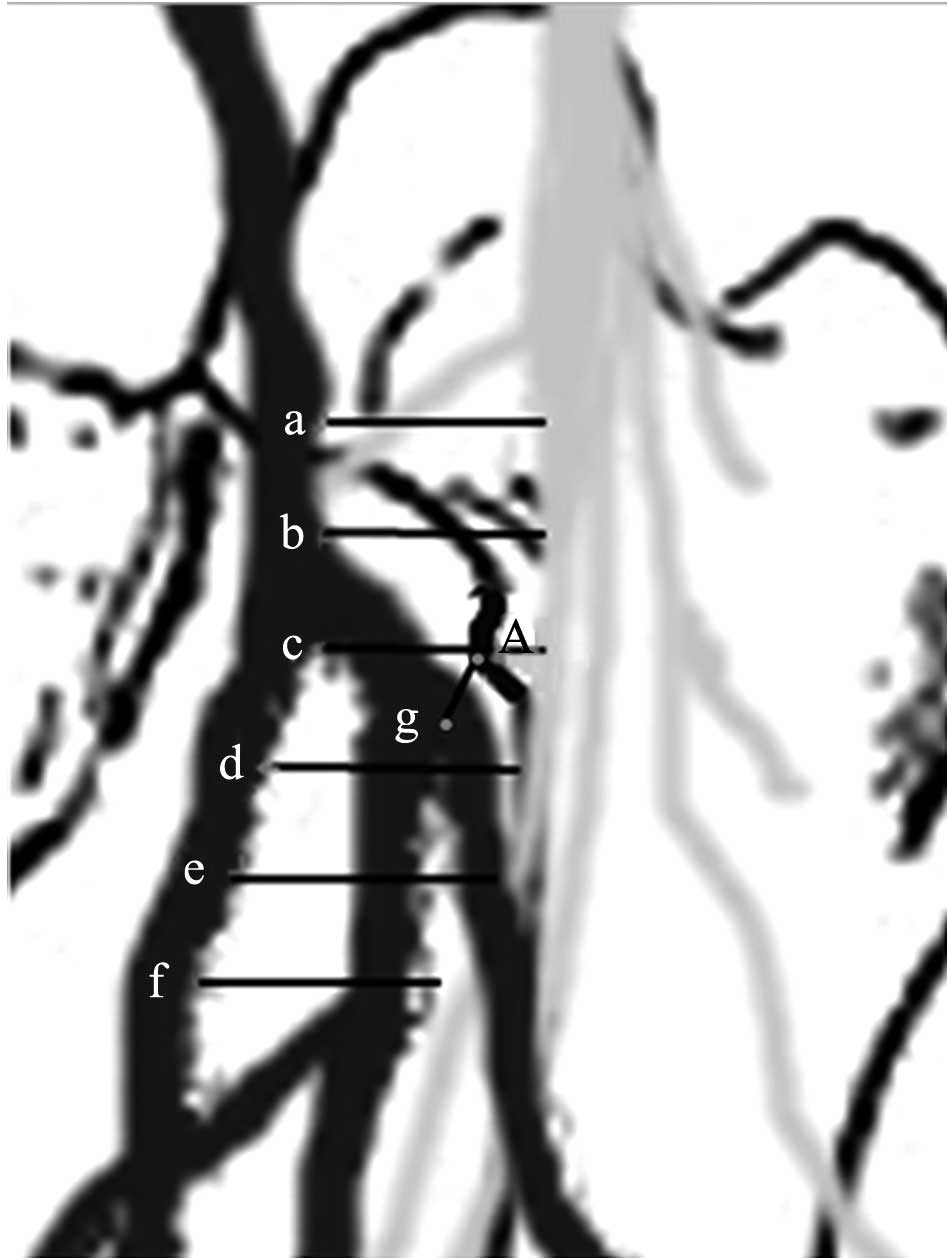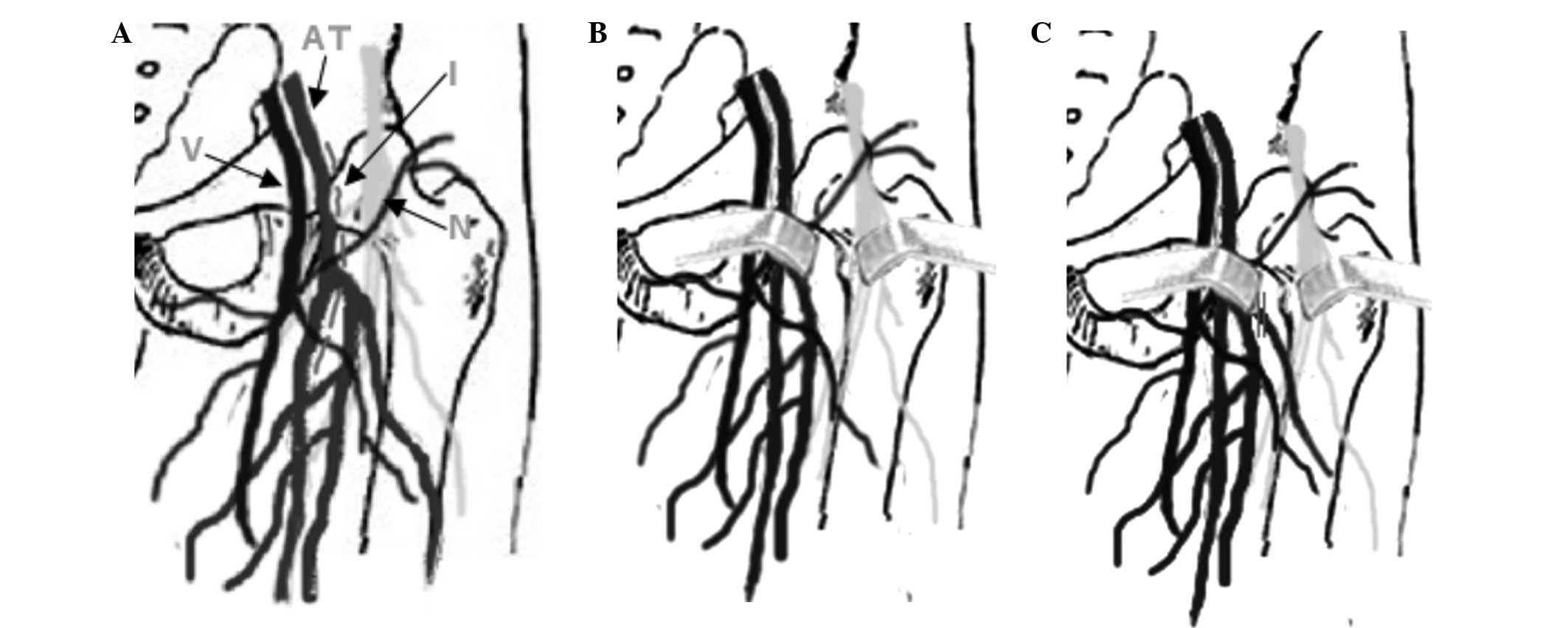|
1
|
Barros Filho TE, Oliveira RP, Taricco MA
and Gonzalez CH: Hereditary multiple exostoses and cervical ventral
protuberance causing dysphagia. A case report. Spine (Phila Pa
1976). 20:1640–1642. 1995. View Article : Google Scholar : PubMed/NCBI
|
|
2
|
Cardelia JM, Dormans JP, Drummond DS,
Davidson RS, Duhaime C and Sutton L: Proximal fibular
osteochondroma with associated peroneal nerve palsy: A review of
six cases. J Pediatr Orthop. 15:574–577. 1995. View Article : Google Scholar : PubMed/NCBI
|
|
3
|
Bottner F, Rodi R, Kordish I, Winklemann
W, Gosheger G and Lindner N: Surgical treatment of symptomatic
osteochondroma. A three- to eight-year follow-up study. J Bone
Joint Surg Br. 85:1161–1165. 2003. View Article : Google Scholar : PubMed/NCBI
|
|
4
|
Learmonth DJ and Raymakers R:
Osteochondroma of the femoral neck secondary to a slipped upper
femoral epiphysis. Arch Orthop Trauma Surg. 112:106–107. 1993.
View Article : Google Scholar : PubMed/NCBI
|
|
5
|
Li M, Luettringhaus T, Walker KR and Cole
PA: Operative treatment of femoral neck osteochondroma through a
digastric approach in a pediatric patient: a case report and review
of the literature. J Pediatr Orthop B. 21:230–234. 2012. View Article : Google Scholar : PubMed/NCBI
|
|
6
|
Anagnostopoulou S, Kostopanagiotou G,
Paraskeuopoulos T, Chantzi C, Lolis E and Saranteas T: Anatomic
variations of the obturator nerve in the inguinal region:
Implications in conventional and ultrasound regional anesthesia
techniques. Reg Anesth Pain Med. 34:33–39. 2009. View Article : Google Scholar : PubMed/NCBI
|
|
7
|
Hsieh PC, Ondra SL, Grande AW, et al:
Posterior vertebral column subtraction osteotomy: a novel surgical
approach for the treatment of multiple recurrences of tethered cord
syndrome. J Neurosurg Spine. 10:278–286. 2009. View Article : Google Scholar : PubMed/NCBI
|
|
8
|
Muhly WT and Orebaugh SL: Ultrasound
evaluation of the anatomy of the vessels in relation to the femoral
nerve at the femoral crease. Surg Radiol Anat. 33:491–494. 2011.
View Article : Google Scholar : PubMed/NCBI
|
|
9
|
Hsu HT, Lu IC, Chang YL, Wang FY, Kuo YW,
Chiu SL and Chu KS: Lateral rotation of the lower extremity
increases the distance between the femoral nerve and femoral
artery: An ultrasonographic study. Kaohsiung J Med Sci. 23:618–623.
2007. View Article : Google Scholar : PubMed/NCBI
|
|
10
|
Norgan NG: The beneficial effects of body
fat and adipose tissue in humans. Int J Obes Relat Metab Disord.
21:738–746. 1997. View Article : Google Scholar : PubMed/NCBI
|
|
11
|
Moore AE and Stringer MD: Iatrogenic
femoral nerve injury: A systematic review. Surg Radiol Anat.
33:649–658. 2011. View Article : Google Scholar : PubMed/NCBI
|
|
12
|
Szöke G, Staheli LT, Jaffe K and Hall JG:
Medial-approach open reduction of hip dislocation in
amyoplasia-type arthrogryposis. J Pediatr Orthop. 16:127–130. 1996.
View Article : Google Scholar : PubMed/NCBI
|
|
13
|
Tumer Y, Ward WT and Grudziak J: Medial
open reduction in the treatment of developmental dislocation of the
hip. J Pediatr Orthop. 17:176–180. 1997. View Article : Google Scholar : PubMed/NCBI
|
|
14
|
Tarassoli P, Gargan MF, Atherton WG and
Thomas SR: The medial approach for the treatment of children with
developmental dysplasia of the hip. Bone Joint J. 96-B:406–413.
2014. View Article : Google Scholar : PubMed/NCBI
|
|
15
|
Koizumi W, Moriya H, Tsuchiya K, Takeuchi
T, Kamegaya M and Akita T: Ludloffs medial approach for open
reduction of congenital dislocation of the hip. A 20-year
follow-up. J Bone Joint Surg Br. 78:924–929. 1996. View Article : Google Scholar : PubMed/NCBI
|
|
16
|
Okano K, Yamada K, Takahashi K, Enomoto H,
Osaki M and Shindo H: Long-term outcome of Ludloffs medial approach
for open reduction of developmental dislocation of the hip in
relation to the age at operation. Int Orthop. 33:1391–1396. 2009.
View Article : Google Scholar : PubMed/NCBI
|
|
17
|
Kalhor M, Horowitz K, Gharehdaghi J, Beck
M and Ganz R: Anatomic variations in femoral head circulation. Hip
Int. 22:307–312. 2012. View Article : Google Scholar : PubMed/NCBI
|
|
18
|
Ichikawa T, Haradome H, Hachiya J,
Nitatori T and Araki T: Diffusion-weighted MR imaging with a
single-shot echoplanar sequence: detection and characterization of
focal hepatic lesions. AJR Am J Roentgenol. 170:397–402. 1998.
View Article : Google Scholar : PubMed/NCBI
|
|
19
|
Grose AW, Gardner MJ, Sussmann PS, Helfet
DL and Lorich DG: The surgical anatomy of the blood supply to the
femoral head: description of the anastomosis between the medial
femoral circumflex and inferior gluteal arteries at the hip. J Bone
Joint Surg Br. 90:1298–1303. 2008. View Article : Google Scholar : PubMed/NCBI
|
|
20
|
Boraiah S, Dyke JP, Hettrich C, Parker RJ,
Miller A, Helfet D and Lorich D: Assessment of vascularity of the
femoral head using gadolinium (Gd-DTPA)-enhanced magnetic resonance
imaging: a cadaver study. J Bone Joint Surg Br. 91:131–137. 2009.
View Article : Google Scholar : PubMed/NCBI
|
|
21
|
Gautier E, Ganz K, Krügel N, Gill T and
Ganz R: Anatomy of the medial femoral circumflex artery and its
surgical implications. J Bone Joint Surg Br. 82:679–683. 2000.
View Article : Google Scholar : PubMed/NCBI
|

















